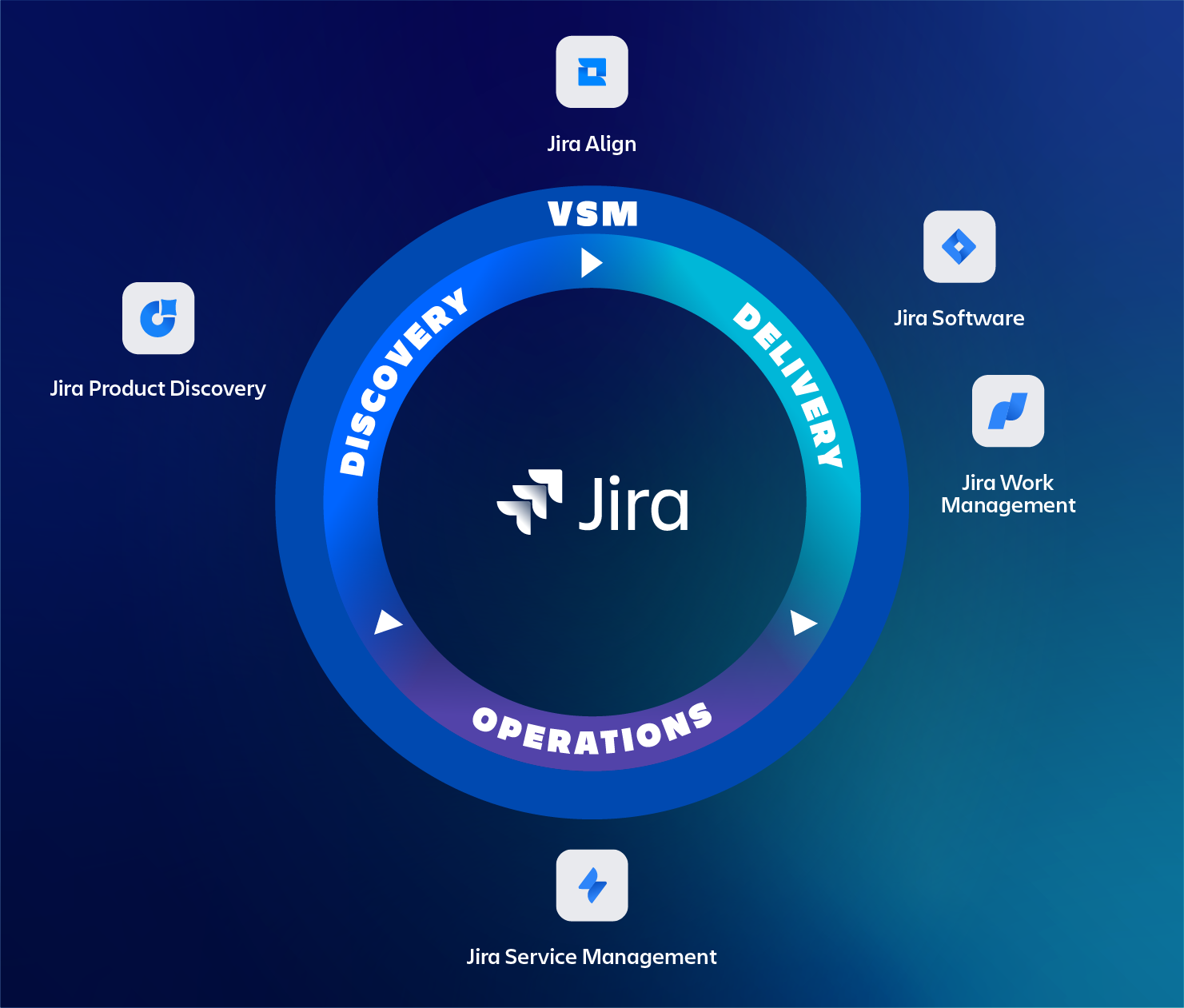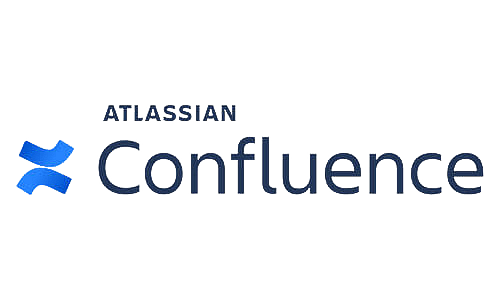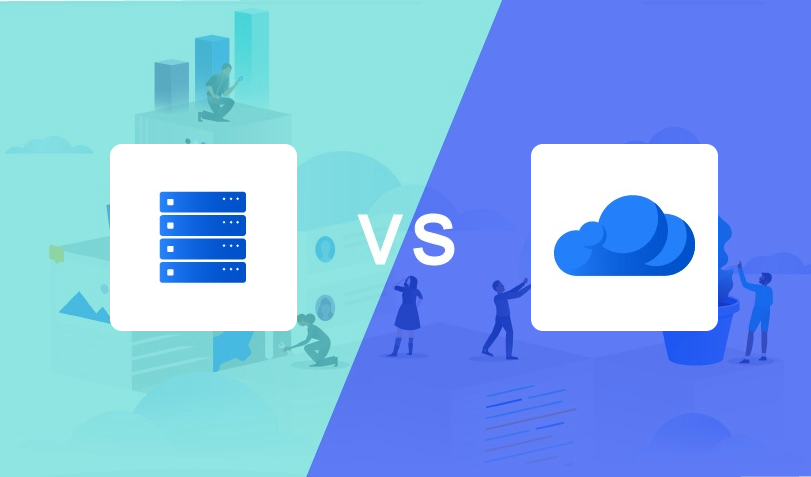Why you need this
Where communication within a team or with a customer is well covered with tools like Jira Software, Jira Service Management and Confluence, there isn’t really a good system designed to communicate across teams.
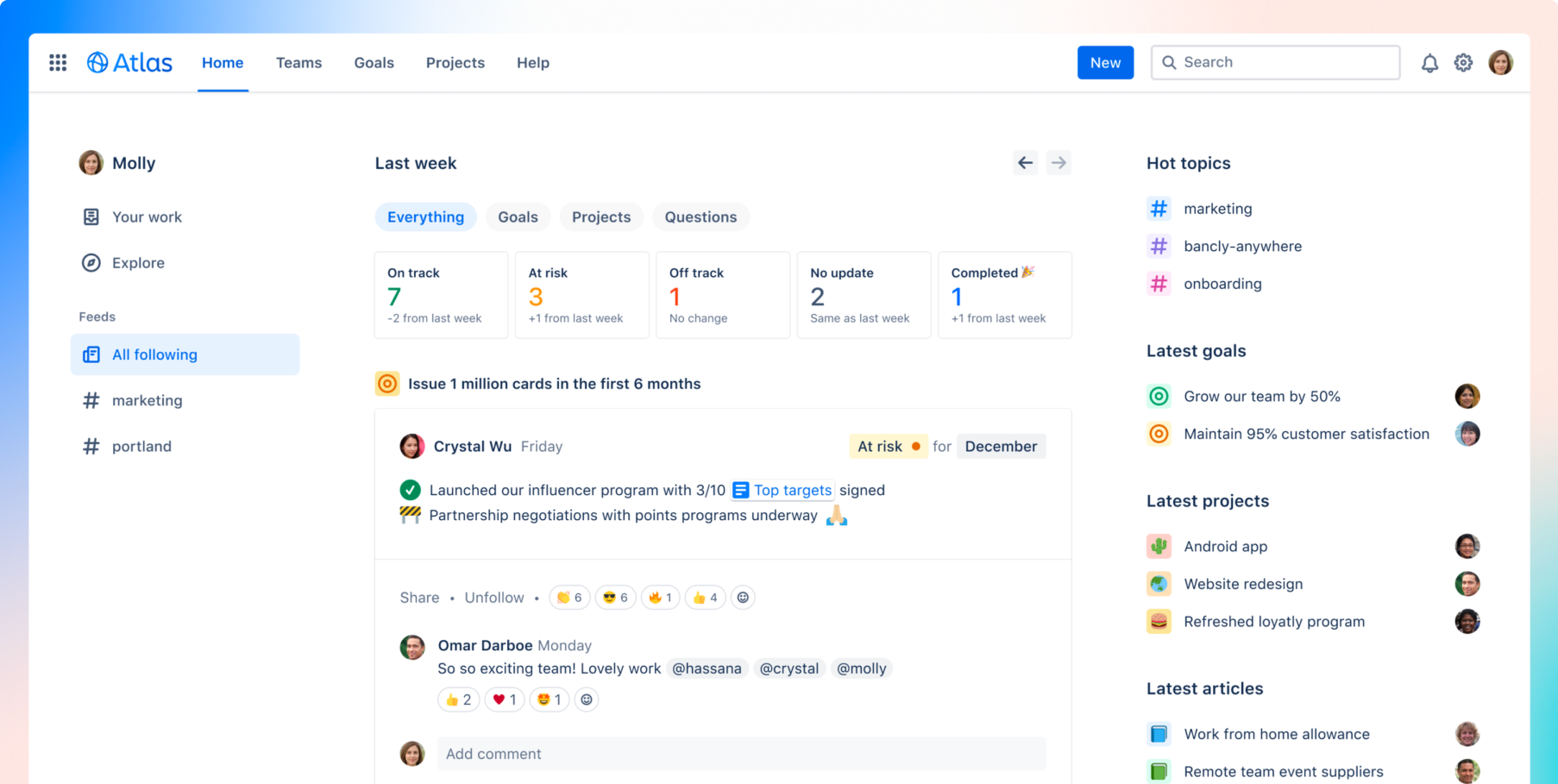
A solution we see used within companies is to set up a number of meetings, often labelled with terms like “status updates”. In general, nobody likes these meetings and they are considered a waste of time. Both TMC ALM and Atlassian believe that communication between teams doesn’t require another meeting, it requires a different approach.
The solution: The Loop framework
As with most products Atlassian offers, it originated from a challenge they had in their own organization and wanted to fix. They saw the number of these redundant status meetings rising and found a way to eliminate them by creating The Loop framework and incorporating them into a tool called Atlas.
We named it the Loop because after adopting it ourselves, our own teams felt more “in the loop” with work happening across the company without feeling overwhelmed, enabling us all to feel more connected and move work forward more effectively. – Atlassian
The loop has four beliefs that result in the design for Atlas:
- Common vocabulary over common tools. This common vocabulary helps everyone get up to speed quickly. Without having to answer the question, “what’s this project about again?” anymore. In Atlas every project should answer the 3 same questions:
- What are we doing?
- Why are we doing it?
- What will success look like?
- Open up your work in progress. Every project should update the status once a week, an automated digest will be send every Monday to opt-in subscribers.
- Curate, don’t automate. Updates should be concise, so in Atlas you can only use 280 characters per update. With every update, you have to reaffirm the status and targeted date.
- Show that you are paying attention. As a follower of updates, you can engage by leaving comments and kudos for appreciation.
How it works
Atlas provides updates on work in progress. These updates are coming from projects, goals and teams.
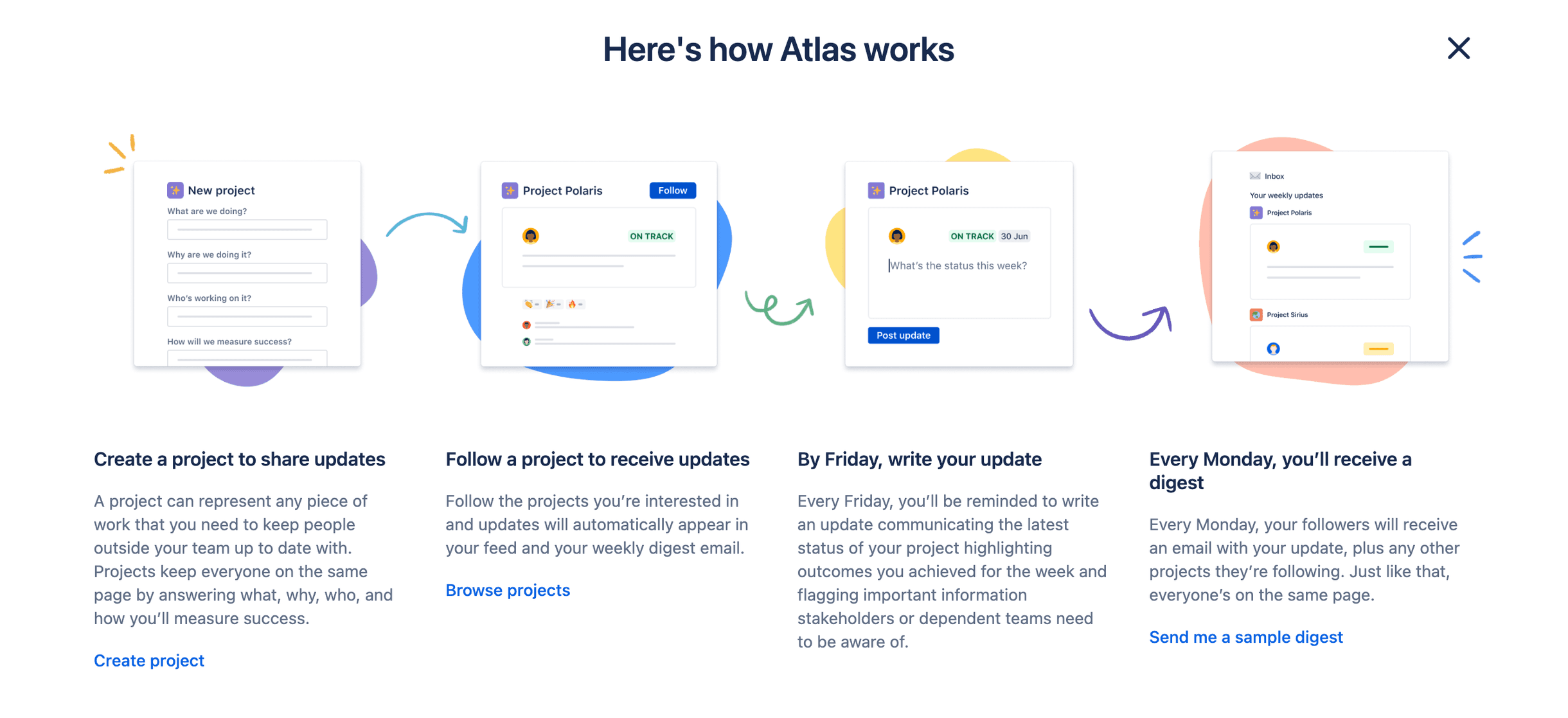
Projects
In Atlas, projects represent a stream of work being completed, that has an owner, a targeted completion date and an overall status. At the end of each week a project member should update the project page, all followers will automatically receive an update on Monday morning.
The recommended size for a project is more than 2 people working on it for more than 2 weeks.
In Jira, a project typically has a more extensive set up. There are more issues, the total timespan is mostly longer and configuration is more complex. An Atlas project is more comparable with an Epic or Initatiative level, therefore you can only connect Atlas projects with Jira Epics.
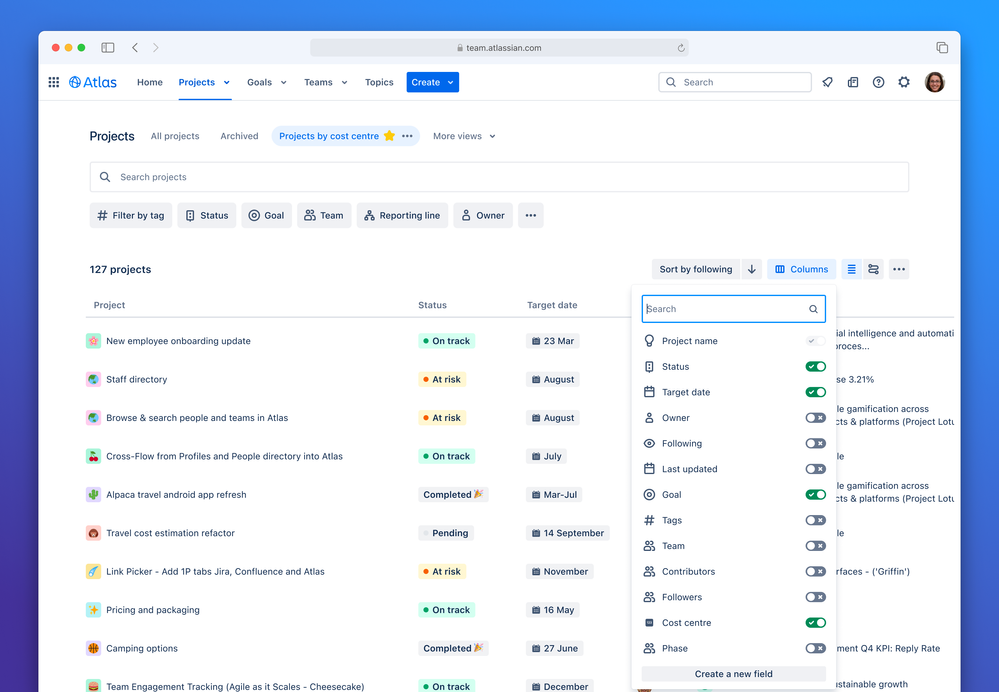
Goals
Next to projects, in Atlas you can also use goals. Think of a goal as an outcome that one or many project teams are trying to achieve. These are higher-level items that might take multiple streams of work to complete. Goals are commonly used as Objectives and key results (OKR) or Key performance indicators (KPI). A goal can also have sub-goals and always has an owner and a team linked. Goals are updated on a monthly basis by their owner. When used with Jira, a goal can be shown in a linked Epic or Initiative.
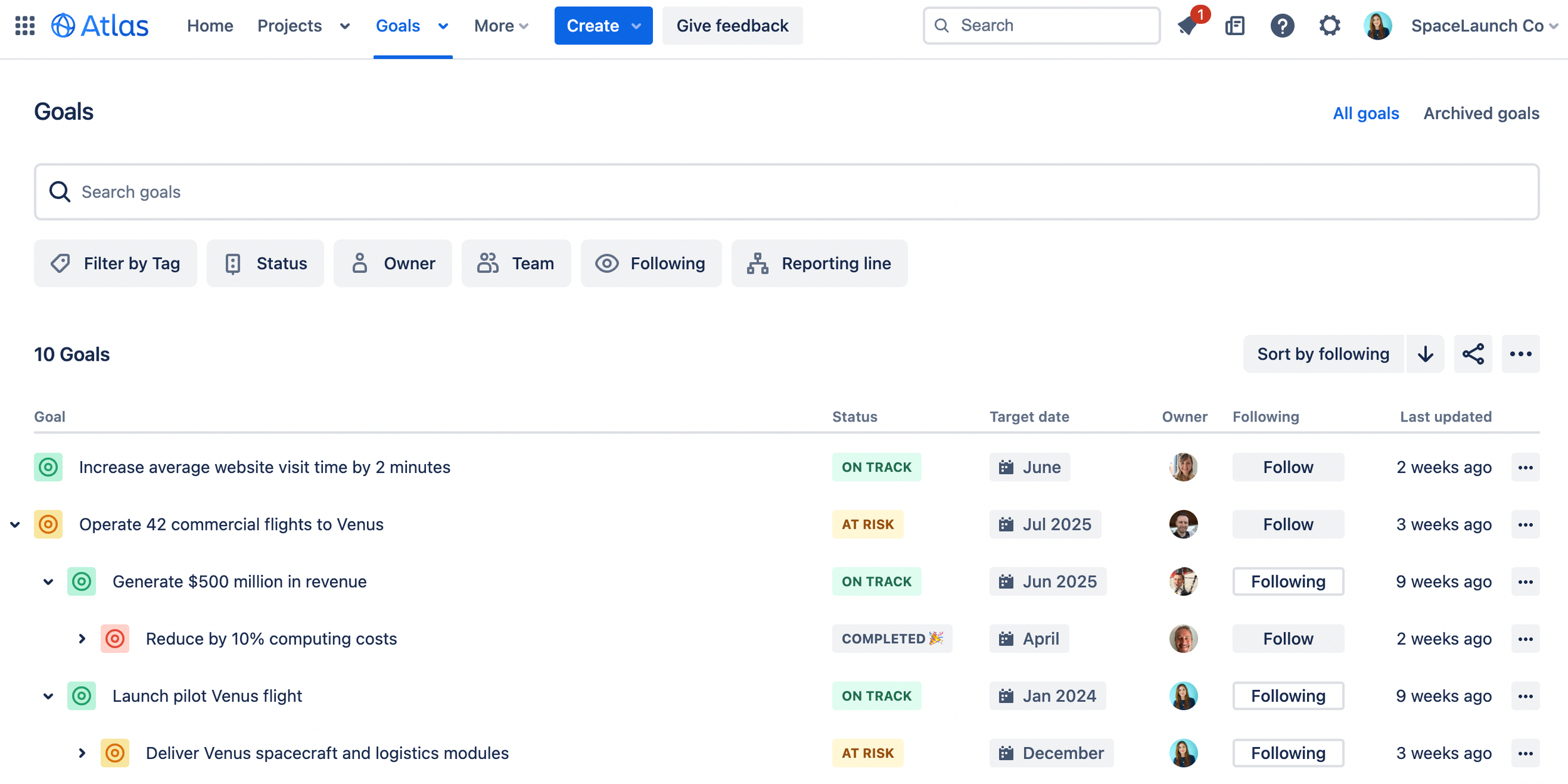
Teams
The teams you create in Jira can be used in Atlas and the other way around. Making it easy to find your peers and know what they are working on. You can filter on different criteria like team, job title, manager, department and location. If you have Atlassian Access, the information comes directly from your Identity Provider, so you don’t have to manually update the information.
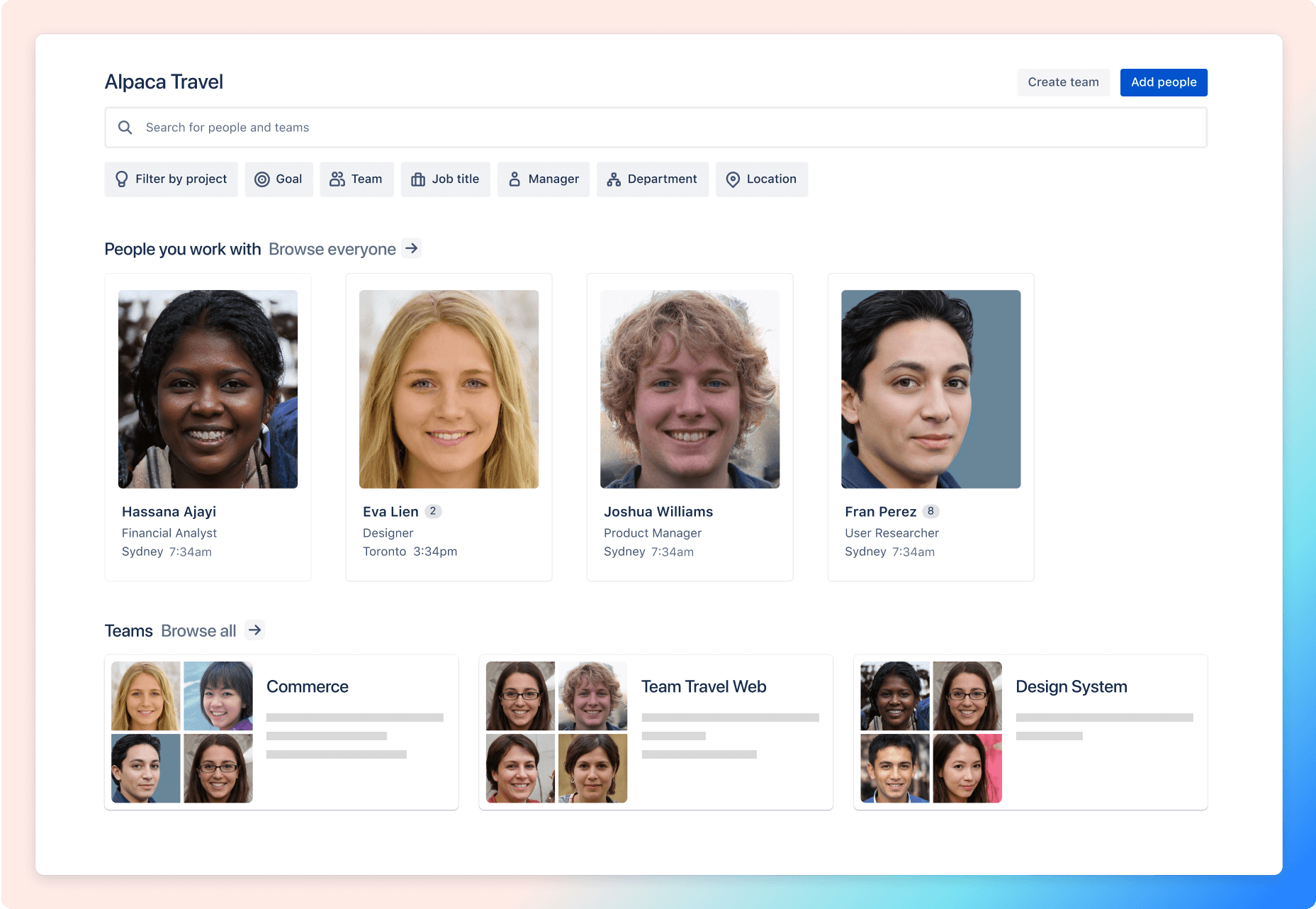
Since Atlas is most useful working together with Jira, it can integrate by showing up in the “Status updates” panel in the Epic that it’s linked to.
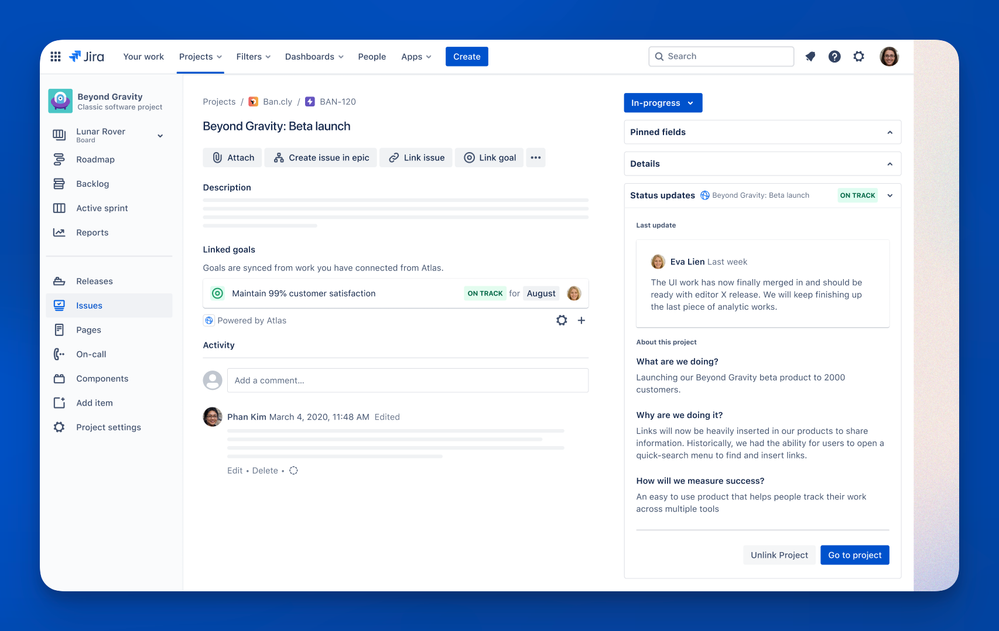
Who’s it for?
Atlas is a great solution for you, if you have questions or concerns like:
- When you have to many status update meetings
- What is that project all about?
- Where can I find an overview of all activities and teams?
- How can we get more involvement and interaction between teams and projects?
- What is the history of this project?
And who’s it not for:
- People who want detailed information on projects, like roadmaps or cost estimations. This is where you can use Plans that is shipped with Jira Software Premium.
- When you need project statistics, dashboards, or reports. You are better of with BI tooling, like Power BI or EazyBI.
Pricing model
Atlas is a Cloud-only product, making use of the pricing model Atlassian has for all it’s cloud products. There are 3 different plans: Free, Standard and Premium. The upside is that at this point in time you can make use of the free version for up to 35.000 user, that’s a lot! So why choose Standard or even Premium?
There are some limitations to the free plan, you might want to consider Standard or Premium.
Standard plan bonus features:
- Custom fields for projects and goals
- Goal scoring
- Private projects
- 250 GB of storage (free only has 2 GB)
Premium plan bonus features (everything from standard plan, plus:)
- Atlassian Intelligence
- 24/7 Premium support
- Unlimited storage
Even though it makes sense to use Atlas with Jira, you don’t need Jira to use Atlas. There is also the availability to get Atlas as part of the Atlassian Together low-cost subscription, including tools as Jira Work management, Confluence and Trello.
Pros & Cons
Pros
- No more wasted time on useless status meetings, one tool to keep in sync with your colleagues.
- Low investment for licenses, start for free with all your users.
- Integration with Jira’s Epic issuetype links higher business goals to team tasks.
- Shared ecosystem with other Atlassian products like Jira and Confluence ensures a single source of truth and minimizes time spent switching apps.
- Opt-in information delivery allows users to pull relevant updates weekly.
Cons
- Effective team communication requires more than just a tool. Investing in proper communication training, such as utilizing the Loop Framework, is essential
Free plan Cons
- Limited customization, particularly in the Free plan version, due to reliance on the Loop Framework.
- Free version only has 2 GB of storage, using rich media will blow up your 2 GB in no time.
Conclusion
Through Atlas, Atlassian aims to enhance communication and alignment across teams and projects, recognizing that inefficiencies arise and siloed work persists when alignment is lacking. By facilitating transparent communication using a shared vocabulary and a weekly rhythm, Atlas helps prevent misalignment, minimize inefficiencies, and showcase accomplished work effectively.
Need help?
If you have any questions about Atlas – or any other – Atlassian topic. The certified Atlassian experts of TMC ALM are happy to help you with all your questions, requests, or remarks. Feel free to reach out to us via our contact page to start a conversation.



